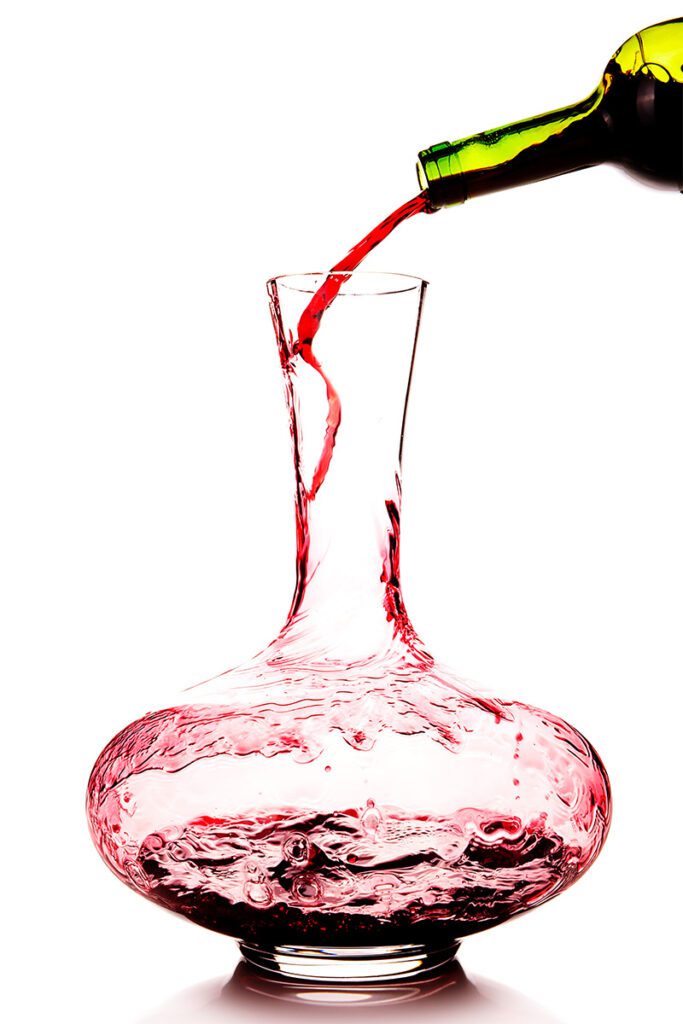If you’re a wine collector you may have heard that you should physically turn the bottles in your cellar (more specifically, the reds) from time-to-time in order to prevent sediment from collecting inside the bottle.
The good news is that you can save yourself the trouble: cellared wines don’t need to be turned at all. Most red wine and some whites will eventually “throw a deposit.” Believe it or not, the best way to prepare for the inevitable is to just let it age in peace. In fact, it’s better if you do!
It’s Not a Riddle: What’s Left in the Bottle, Stays in the Bottle

It’s not exactly clear where the idea to turn your wine came from, but it’s possible someone saw the Champagne making process and assumed that all wine bottles should be turned. Champagne bottles are riddled to remove dead yeast (see photo) before selling.
Most of the wines we buy on the market are “fined” and filtered for brilliance and clarity. The exceptions to this rule are Natural and Organic Wines which are intentionally left unfiltered.
Ultimately, the amount of stuff left in the bottle before putting the cork in affects its potential for leaving a deposit over time: You’ll see why in the next section.
Wine Deposits and Sediment are Inevitable: Here’s Why.

Wine is technically a colloid, in scientific terms that means that it’s a liquid with heterogenous particles floating in it. If you could zoom in with a powerful microscope, you’d see that it’s mostly water and alcohol with microparticles of grape, yeast, tartrates and other organic compounds suspended throughout. As mentioned before, some of this stuff can be filtered out at bottling, but not all of it is.
Over time these bits clump together and when heavy enough, sink to the bottom of the liquid. So, it stands to reason that the older a bottle of wine is, the more time it’s had to collect a deposit.
Out of all the wines in your collection, reds are the most likely to have sediment in them because they have more organic materials, including tannins and color compounds from the grape skins. White wines, by nature, don’t have as many solids so this is less common.
In red wines you’ll recognize this sediment as a gritty sludge that you may find in your wine glass or inside the neck of the bottle. This is completely natural and not an indication of a faulty wine – in fact, it shows you that your wine is a living, evolving product that changes with time; and that it’s probably on the older side. That being said, most people don’t enjoy drinking wine sediment, so here’s the best way to avoid it.
The Best Way to Store Wine: Cellar It and Leave It Alone
Now that you know what’s going on inside the bottle you can probably see why it’s best to leave your wines alone once they’re on the shelf. The less you disturb that wine the better the chances are that the deposit will collect in one central location; and as the deposit collects it tends to stick to the side of the bottle which makes it easier to conveniently pour around when ready to serve.
It’s inevitable that some sediment will make it out of the bottle but decanting the wine before serving will not only allow the wine to aerate, but also lets any remaining sediment fall to the bottom of the decanter and out of the way. If you’re really put off by any remaining sludge, you can also run the wine through a wire mesh or coffee filter before serving.
Wine collectors are passionate people! It’s only natural you might want to visit your cellar once in a while, to look at – and maybe even talk to – your bottles. And yes, you can even pick them up once in a while, gently. Do whatever makes you happy – just resist the urge to turn them.
And now that you know the secret to storing fine wine, let’s find your perfect cellar setup. Preferably one that displays your collection so you can admire it without a lot of touching!


